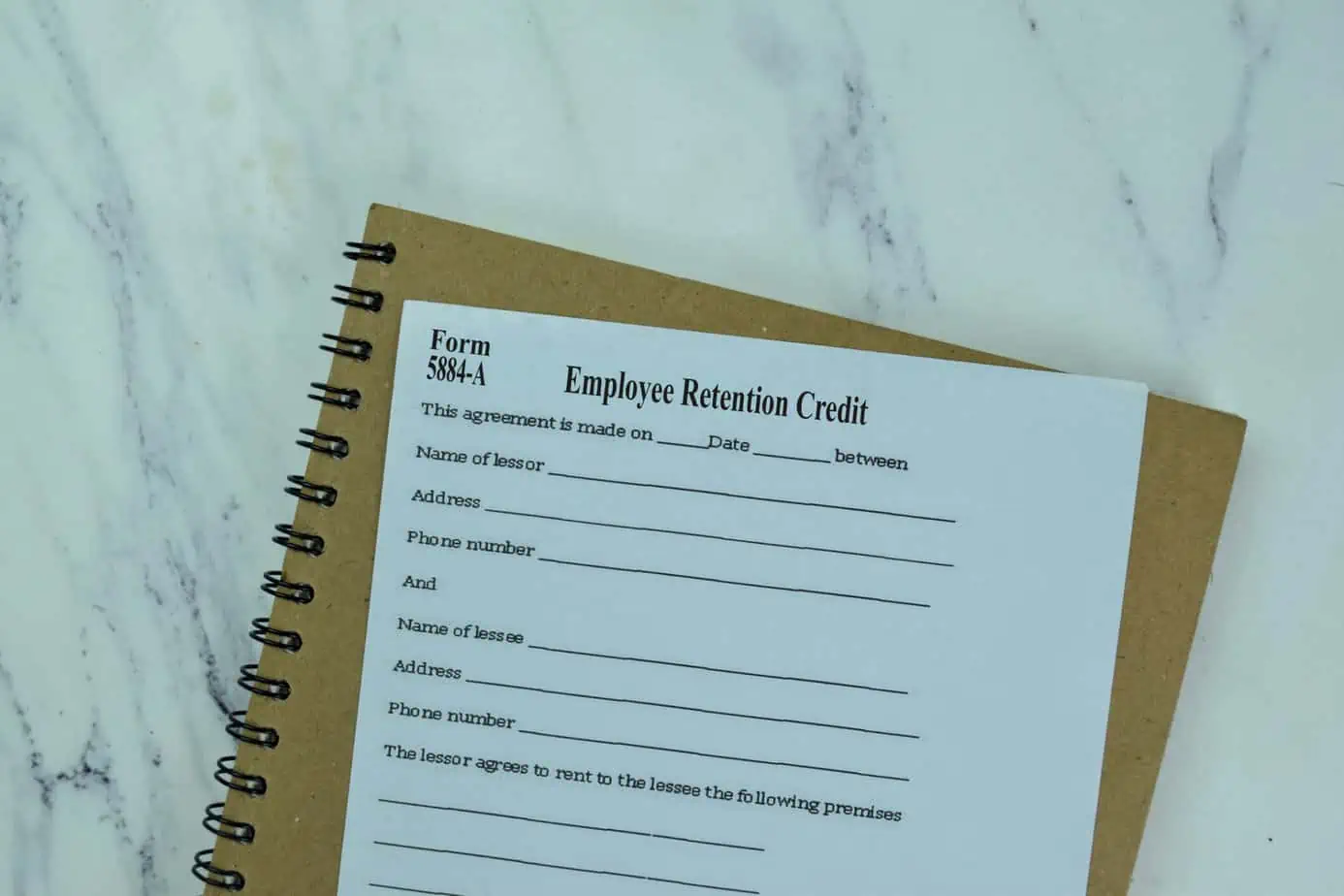Introduction
Employee Retention Credit offers financial relief and support to small businesses that decided to keep their staff on payroll during the pandemic crisis. Companies can claim employee retention tax credits for 2020 and 2021. If your business is eligible, you can use IRS Form 941-X to apply right now.
The IRS offers ERC, which is part of the CARES Act. Now, businesses often find it difficult to keep up with the changing deadlines and rules of the Employee Retention Credit program.
The original ERC eligibility timeline would have ended by the end of Q4 2021. However, the new extension allows businesses to apply for employee retention credits until 2024. This leaves more room for businesses, but the 2023 deadline is approaching.
Keeping that in mind, let’s break down the details of deadlines for filing the Employee Retention Credit.
Employee Retention Credit Recap

Congress approved relief provisions of $2.2 trillion for the CARES Act. In 2020, the act was signed as a direct reaction to the adverse effects of COVID-19 on businesses across the United States. The CARES Act includes many benefits for small and mid-sized businesses and American workers.
The Employee Retention Tax Credit aims to incentivize businesses that successfully retained their full-time workers during COVID-19. It offers credit to qualifying employers that provide wages to their employees.
ERC Eligibility Requirements

There are two main eligibility requirements for employers to meet and receive the tax credit:
- A significant reduction in total revenue
- A significant decrease in gross receipts without cutting expenses
You can determine your eligibility status by comparing your 2019 revenue with 2020. That’s because it precedes the impact of the pandemic and lockdowns that started in late March 2020.
Employers need to meet a few conditions to achieve qualifying criteria and get employee retention tax credits. Specifically, employers have to meet “quarterly” calendar requirements to claim the ERC.
- If your business was forced to roll back operations during open hours or stop some or all business-related activities
- If your business witnessed a significant reduction in quarterly gross income in 2020-2021 as compared to 2019
- If your business experienced a loss of 50% in 2020 as compared to 2019
- If your business experienced a reduced income of 20% in 2021 as compared to 2019
Current Deadlines for Filing the Employee Retention Credit

What are the deadlines for filing the employee retention credit? You can claim Employee Retention Credit until 2024, assuming you suffered a massive loss in gross receipts and revenue in 2020-21. So, if you’re eligible, you can apply now and take receive this tax credit.
Businesses can get a credit of over $5,000 for each employee in 2020 and around $7,000 per quarter per employee in 2021. Regarding the deadlines for the Employee Retention Credit, pay close attention so that you don’t miss out on this unique opportunity to lower your overall tax bill.
2020 ERC deadline
The 2020 ERC deadline is April 15, 2024. It is vital to note that this deadline applies to Q2, Q3, and Q4 of 2020. Of course, you cannot count the first quarter since the pandemic didn’t start until the end of Q1 in the United States.
2021 ERC Deadline
The Employee Retention Credit deadline for Q1, Q2, Q3, and Q4 of 2021 is April 15, 2025. It gives plenty of time for business owners to collect relevant documents and submit a proper application.
The wise move would be to apply as fast as possible because the IRS currently has a long backlog of applications to review. So, the sooner you decide to apply, the sooner you’ll get approval and get your tax credit funds. You can also get your tax credit and use it for your unpaid tax bill.
Overview
As of now, there are two deadlines to file an Employee Retention Claim:
For Q2-Q4 2020
The deadline to apply for the Employee Retention Credit is April 15, 2024
For Q1-Q4 2021
The deadline to apply for the ERC is April 15, 2025.
OR
2024 – Jan – April: For 2020, it involves 941 payroll-based tax filings
2025 – Jan – April: For 2021, it involves 941 payroll tax filings
April 15 is the current deadline for filing the ERC tax credit for tax filing year 2020-2021.
What Form Do You Need to Use to Apply for ERC?
You can only file ERC using Form 941-X where you add the required information to Claim for Refund or “Adjusted quarterly employer’s federal tax return.” For every calendar quarter that you want to claim ERTC, you’ll need to file a separate 941-X.
Unlike Form 941, 941-X includes some changes that require a different approach. Typically, 941 forms are due by the end of the month and follow the next quarter. It is crucial to understand that every tax year is different and features specific deadlines.
More Businesses Need to Apply for ERC
It is startling to realize that fewer than 5% of small businesses know about the Employee Tax Credit program. In any case, focus on a specific timeline and consider one application at a time. And that’s because every tax year mandates a combination of forms to support and validate eligibility requirements.
Sure, the Employee Retention Credit offers much-needed help to small businesses that suffered losses and downtime during the pandemic crisis. But the deadlines are getting closer and business owners have to act faster to meet all the requirements and successfully claim this credit.
How Businesses Can Apply for the Employee Retention Credit
You can get professional help to prepare the required documents and submit your ERC application without mistakes. Get someone who can help you streamline your ERC application and cut out the guesswork throughout the process.
Remember that all US-based employers during the COVID-19 pandemic whose company partially or fully suspended operations due to lockdowns are eligible for ERTC. It also includes companies that have a small number of eligible staff that can qualify for the Employee Retention Credit.
So, if the shop, business, or company was forced to shut down operations due to government lockdowns or was unable to remain open can apply for the ERC. Businesses have to meet one of the conditions to qualify for the 2021 ERC:
- Partial or total suspension of operations due to government lockdowns or restrictions on travel, meetings, and commerce
- Loss of at least 20% in the total gross receipts as compared to the same 2019 quarter
- Recovery startups with annual gross sales of at least $1 million that started operating after February 15, 2020
Learn to Calculate the ERC
Follow the lead of experienced companies that use an ERC calculator to figure out how much they can claim in tax credits. But if you don’t have the technical understanding or want to save time learning about the comprehensive requirements to be eligible and apply for ERC, then get the help of a tax expert.
Now, if you’re eligible for an ERC tax credit because of the decline in your gross receipts, you’ll have to first determine your gross receipts for a specific quarter in 2020/2021. After that, compare that quarter with the 2019 quarter to see how much of a decline in gross receipts you suffered.
If your gross receipts were lower than 50% for a quarter in 2020 as compared to the same in 2019, then you’re eligible to claim Employee Retention Credit. On the bright side, it is even easier for business owners to meet the threshold requirement for the 2021 tax year. So, if your company’s gross receipts were lower than 80% as compared to the same 2019 quarter, you automatically qualify for the ERC.
In 2023, filing for Employee Retention Claim is a matter of meeting all the requirements of the IRS. Most importantly, make sure your paperwork is complete. Only when you’re confident that you’ve met all the eligibility requirements – then take your next move and file for the employee retention credit.
You can also track your submitted ERC for 2023 by reaching out to the IRS so that it checks your filing details. On the IRS hotline, you’ll be communicating with an IRS agent, and you’ll have to wait for your turn to communicate your ERC application details.
Summing Up
In retrospect, small businesses can depend on the Employee Retention Credit for relief. By better understanding, the 2023-24 deadlines, how to calculate them, and the qualification criteria, small businesses can claim the credit and get the financial help they deserve and need.
On the surface, the process to apply for the ERC can come across as far too complex for business owners, and that’s fine. You can always get professional help to expand your practical understanding of the ERC and file a proper claim in 2023. So, don’t hesitate to reach out to professional tax specialists who can guide you on how to properly claim ERTC before the deadline.

